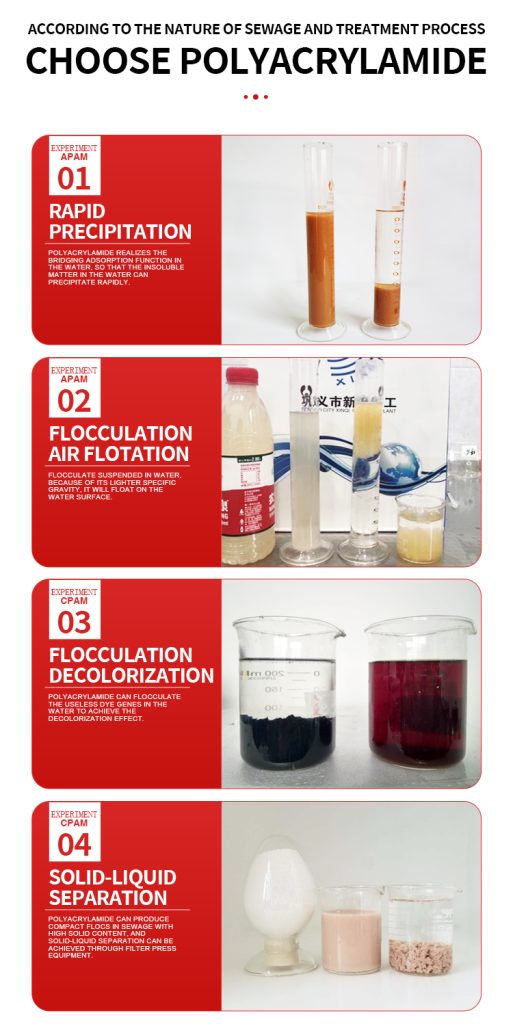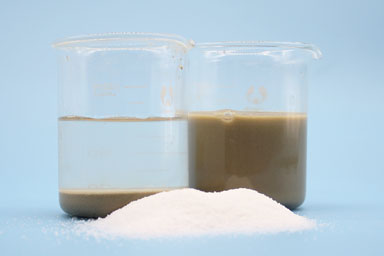Polyacrylamide (PAM) dosing conditions
Dissolution conditions:
○ Water quality: The water used to dissolve PAM should be clean, neutral, and free of salt impurities. Avoid using water containing iron ions or other impurities that may react with PAM.
○ Temperature: It is usually recommended to dissolve PAM between 5℃ and 60℃. Too low a temperature may result in a slow dissolution rate, while too high a temperature may accelerate the degradation of PAM and affect its performance.
○ Dissolution method: Slowly sprinkle into the stirred water. Do not add a large amount of reagent at one time to prevent agglomeration and inadequate dissolution. The appropriate stirring speed is generally controlled at 100~300rpm.
Concentration adjustment:
○ According to actual needs and treatment processes, prepare a PAM solution with a concentration of 1-5‰ (i.e., 1-5 grams of PAM per liter of water). For some special applications, such as sludge dewatering, a higher concentration of solution may be required.
○ Ensure that PAM is completely dissolved into a transparent or translucent colloidal liquid with no obvious suspended particles.
Dosing order and mixing method:
○ In conventional coagulation and sedimentation processes, inorganic coagulants (such as polyaluminium chloride PAC) are usually added first, and then PAM is added, so that PAM can more effectively bridge and net the flocs treated with PAC.
○ Dosing should be done in a continuous and uniform manner, and attention should be paid to the selection of dosing points so that it can be fully mixed with the sewage.
pH value control:
○ The flocculation effect of PAM can be optimized by adjusting the pH value of the treated liquid. The optimal pH range is selected according to the type of PAM and the characteristics of the wastewater.
Dosage control:
○ The amount of PAM added is not fixed and needs to be determined based on the actual properties of the sewage, the solid content and the test results. Too much or too little will affect the flocculation effect and treatment cost.
Equipment considerations:
○ According to the treatment scale and site conditions, select appropriate dissolution equipment and dosing equipment, such as gravity dosing, pressure dosing or water pump dosing.


